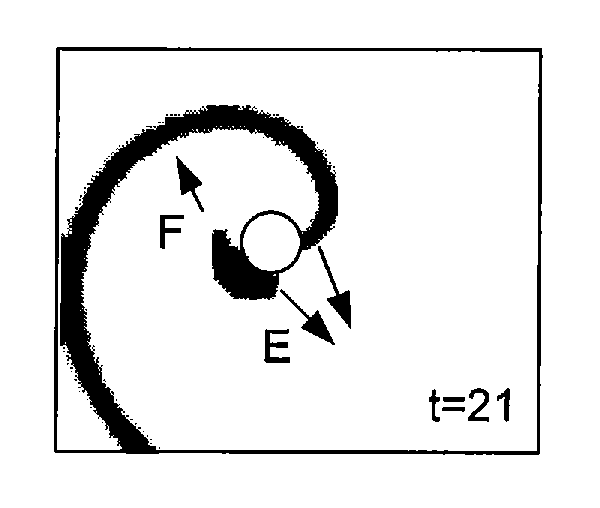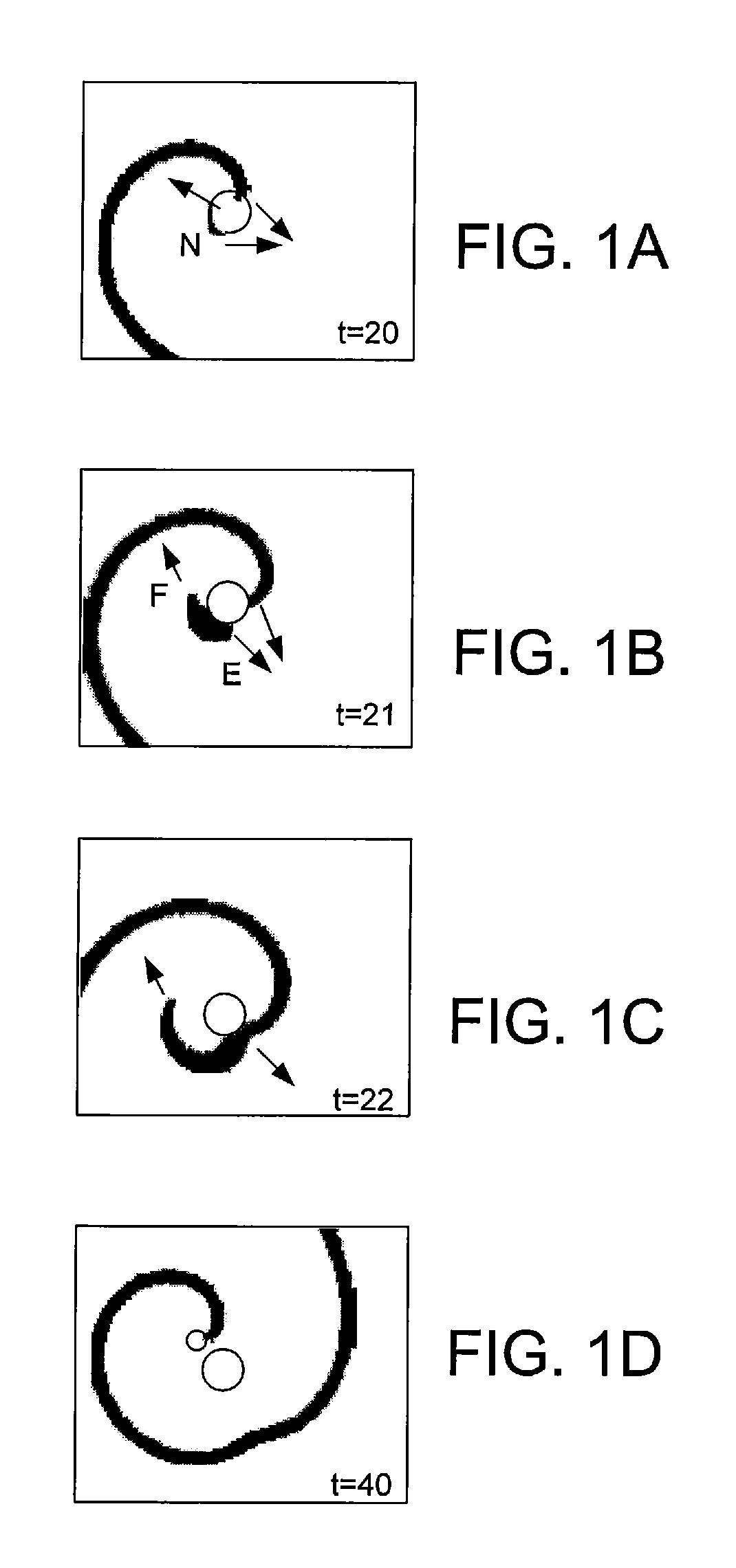Method for stabilization of cardiac tissue contractions using limit cycles
a cardiac tissue and limit cycle technology, applied in the direction of therapy, heart stimulators, heart defibrillators, etc., can solve the problems of ventricular pacing not reproducing the precise wave front, pacing induced inefficiency, and atrial atrial contraction, etc., to stabilize atrial and ventricular arrhythmias and regularize contractility
- Summary
- Abstract
- Description
- Claims
- Application Information
AI Technical Summary
Benefits of technology
Problems solved by technology
Method used
Image
Examples
Embodiment Construction
[0019]The realization that many activities of an apparently random nature are actually examples of a deterministic phenomenon known as chaos offers a new approach to analysis and modification of the type of complexity exhibited by cardiac tissue.
[0020]The electrical impulses that normally cause sinus rhythm are thought to progress repeatedly around irregular conduction pathways within the heart. These conditions, if uncontrolled, can become life threatening if the aberrant electrical impulses enter the atrioventricular node (AV node) in a sporadic and / or at an accelerated rate and can cause an irregular ventricular rate that degenerates into an immediate life threatening ventricular arrhythmia.
[0021]To quantitatively characterize the response of a global arrhythmia to a single pulse stimulus, one can calculate Poincare maps which can be used to anticipate the system response when a therapeutic pulse is applied. For example, one generates a Poincare space plot comprised of global per...
PUM
 Login to View More
Login to View More Abstract
Description
Claims
Application Information
 Login to View More
Login to View More - R&D
- Intellectual Property
- Life Sciences
- Materials
- Tech Scout
- Unparalleled Data Quality
- Higher Quality Content
- 60% Fewer Hallucinations
Browse by: Latest US Patents, China's latest patents, Technical Efficacy Thesaurus, Application Domain, Technology Topic, Popular Technical Reports.
© 2025 PatSnap. All rights reserved.Legal|Privacy policy|Modern Slavery Act Transparency Statement|Sitemap|About US| Contact US: help@patsnap.com


